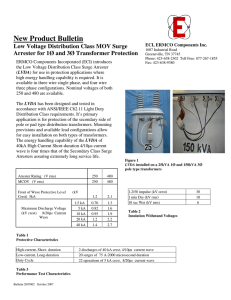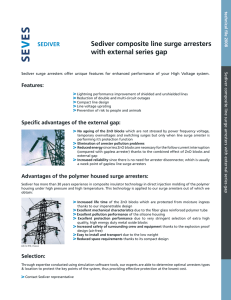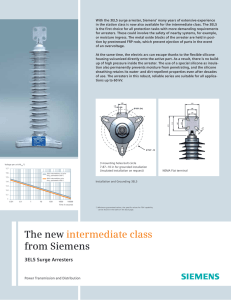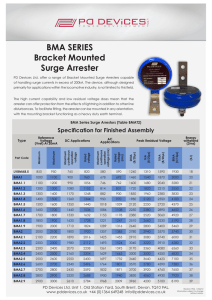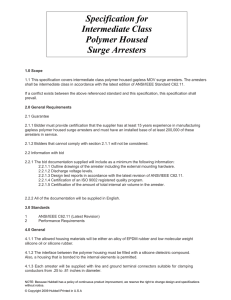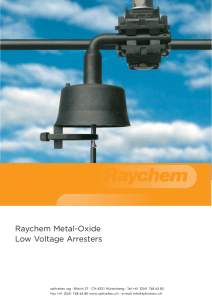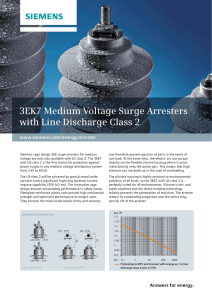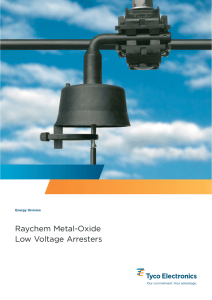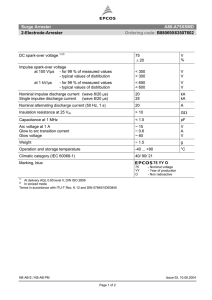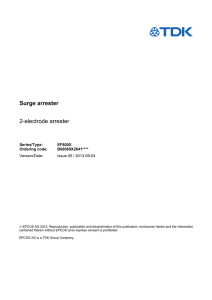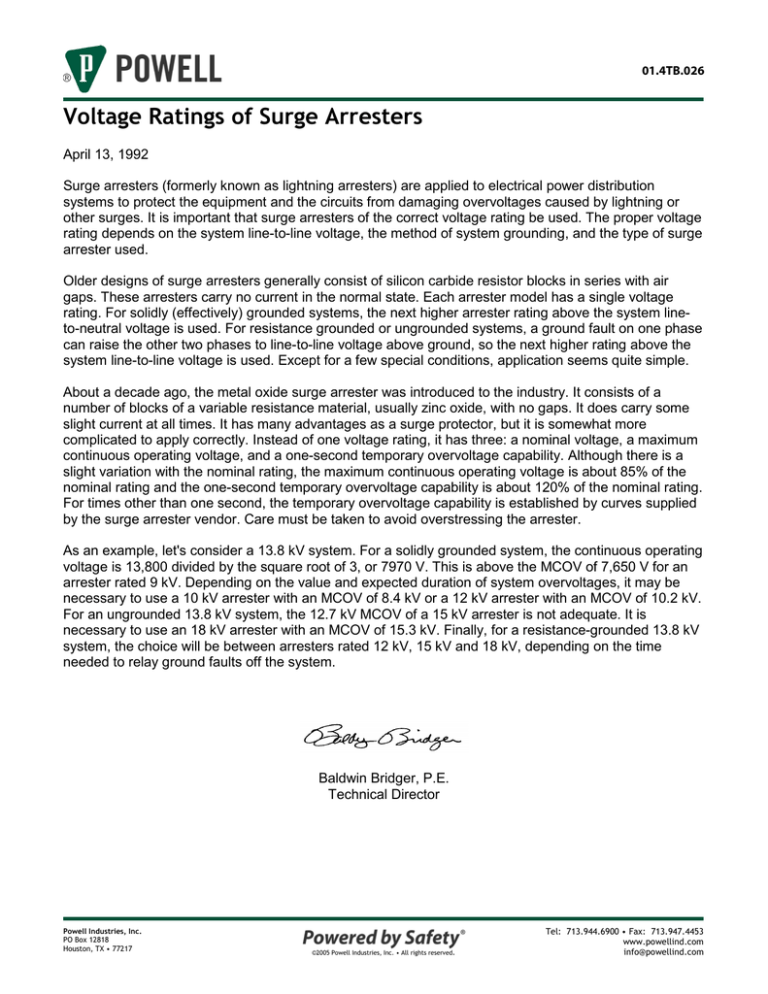
01.4TB.026
Voltage Ratings of Surge Arresters
April 13, 1992
Surge arresters (formerly known as lightning arresters) are applied to electrical power distribution
systems to protect the equipment and the circuits from damaging overvoltages caused by lightning or
other surges. It is important that surge arresters of the correct voltage rating be used. The proper voltage
rating depends on the system line-to-line voltage, the method of system grounding, and the type of surge
arrester used.
Older designs of surge arresters generally consist of silicon carbide resistor blocks in series with air
gaps. These arresters carry no current in the normal state. Each arrester model has a single voltage
rating. For solidly (effectively) grounded systems, the next higher arrester rating above the system lineto-neutral voltage is used. For resistance grounded or ungrounded systems, a ground fault on one phase
can raise the other two phases to line-to-line voltage above ground, so the next higher rating above the
system line-to-line voltage is used. Except for a few special conditions, application seems quite simple.
About a decade ago, the metal oxide surge arrester was introduced to the industry. It consists of a
number of blocks of a variable resistance material, usually zinc oxide, with no gaps. It does carry some
slight current at all times. It has many advantages as a surge protector, but it is somewhat more
complicated to apply correctly. Instead of one voltage rating, it has three: a nominal voltage, a maximum
continuous operating voltage, and a one-second temporary overvoltage capability. Although there is a
slight variation with the nominal rating, the maximum continuous operating voltage is about 85% of the
nominal rating and the one-second temporary overvoltage capability is about 120% of the nominal rating.
For times other than one second, the temporary overvoltage capability is established by curves supplied
by the surge arrester vendor. Care must be taken to avoid overstressing the arrester.
As an example, let's consider a 13.8 kV system. For a solidly grounded system, the continuous operating
voltage is 13,800 divided by the square root of 3, or 7970 V. This is above the MCOV of 7,650 V for an
arrester rated 9 kV. Depending on the value and expected duration of system overvoltages, it may be
necessary to use a 10 kV arrester with an MCOV of 8.4 kV or a 12 kV arrester with an MCOV of 10.2 kV.
For an ungrounded 13.8 kV system, the 12.7 kV MCOV of a 15 kV arrester is not adequate. It is
necessary to use an 18 kV arrester with an MCOV of 15.3 kV. Finally, for a resistance-grounded 13.8 kV
system, the choice will be between arresters rated 12 kV, 15 kV and 18 kV, depending on the time
needed to relay ground faults off the system.
Baldwin Bridger, P.E.
Technical Director
Powell Industries, Inc.
PO Box 12818
Houston, TX • 77217
©2005 Powell Industries, Inc. • All rights reserved.
Tel: 713.944.6900 • Fax: 713.947.4453
www.powellind.com
info@powellind.com

